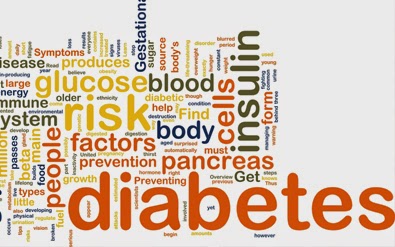What is Diabetes Mellitus? Know it to Nail it.
Diabetes Mellitus
Diabetes Mellitus is a metabolic disorder that interferes with how sugar/glucose is utilized in our body.
Every time we eat something, our digestive system converts food into sugar/glucose. This sugar is then transported to all the parts of the body through blood stream. When the blood sugar levels rise, which usually happens after we eat something, pancreas releases insulin.
This insulin is responsible for making the sugar available for all cells of the body which will use for the energy needed for all the bodily functions.
It is a simple lock and key arrangement. Insulin acts as key to open cell 'lock' so that the blood sugar can enter the cells for further utilization. But when someone has a diabetes, this mechanism does not work.
Types of Diabetes Mellitus
Type 1 Diabetes Mellitus
In type 1 diabetes, due to some reasons (off course unknown to scientists) our immune system attacks and kills insulin producing pancreatic cells. As a result, production of insulin reduces or stops completely. This is when body looses its ability to regulate the sugar levels in the blood. This is known as Type 1 Diabetes or Insulin Dependent Diabetes Mellitus (IDDM) as the person needs to take insulin from outside to regulate the blood sugar levels.
This condition creates two problems:
- Sugar remains in the blood stream affecting the other organs like brain, nerves, heart, kidneys, eyes and skin
- As there is no insulin, body cells are starved of the energy and many vital processes, such as regeneration and repair, come to standstill
This type of diabetes develops at young age mainly affecting children but can occur in adults of any age.
Type 2 Diabetes
About 90% of the diabetic people suffer from type 2 diabetes mellitus. This is also known as Non Insulin Dependent Diabetes Mellitus (NIDDM). In this condition, our body makes insulin but it looses its ability to make cells absorb glucose. In other words, cells stops responding to insulin.
When cells stop responding to insulin, the sugar level in the blood increase dramatically. Pancreas, sensing this rise, further injects more insulin in to the blood stream. This condition is known as Type 2 Diabetes.In India, the incidence of type 2 diabetes is rising rapidly and as much as 6% of the population is living with this condition.
This puts a lot of stress on pancreas and leads to wear and tear of pancreatic cells. Eventually pancreas looses its ability to produce insulin and type 2 diabetes manifests into type 1 diabetes










